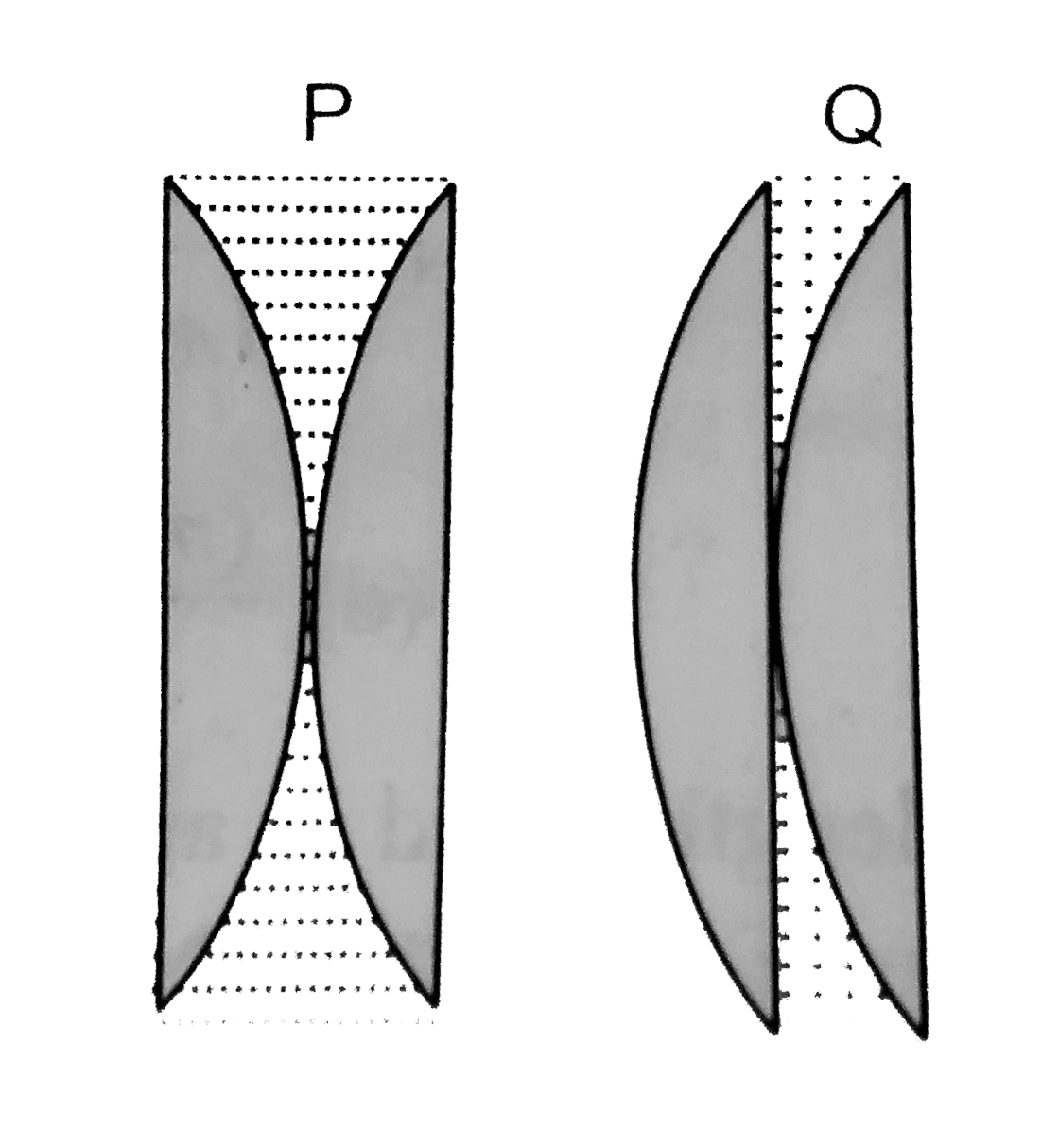Two convex lesses of power 2 D and 5 D are separated by a distance 13m m The power of the optical system formed is
+2D
−2D
−3D
+3D
The correct Answer is:D
To find the power of the optical system formed by two convex lenses separated by a distance, we can follow these steps:
1. Identify the Powers of the Lenses:
- Let the power of the first lens P1=2D
- Let the power of the second lens P2=5D
2. Convert Power to Focal Length:
- The focal length f of a lens is related to its power P by the formula:
P=1f⇒f=1P
- For the first lens:
f1=1P1=12 m
- For the second lens:
f2=1P2=15 m
3. Use the Formula for Combined Focal Length:
- When two lenses are separated by a distance d, the formula for the combined focal length f is given by:
1f=1f1+1f2−df1f2
- Here, d=13 m.
4. Substitute the Values:
- Substitute f1, f2, and d into the formula:
1f=112+115−13(12)(15)
- This simplifies to:
1f=2+5−13110=2+5−103
5. Calculate the Result:
- Combine the terms:
1f=7−103=213−103=113
- Therefore, the combined focal length f is:
f=311 m
6. Calculate the Power of the Optical System:
- Now, calculate the power of the optical system:
P=1f=113 D≈3.67 D
- Since we are looking for the nearest whole number, we can round it to 4D.
Final Answer:
The power of the optical system formed is approximately 4D.
- Let the power of the first lens P1=2D
- Let the power of the second lens P2=5D
- The focal length f of a lens is related to its power P by the formula:
P=1f⇒f=1P
- For the first lens:
f1=1P1=12 m
- For the second lens:
f2=1P2=15 m
- When two lenses are separated by a distance d, the formula for the combined focal length f is given by:
1f=1f1+1f2−df1f2
- Here, d=13 m.
- Substitute f1, f2, and d into the formula:
1f=112+115−13(12)(15)
- This simplifies to:
1f=2+5−13110=2+5−103
- Combine the terms:
1f=7−103=213−103=113
- Therefore, the combined focal length f is:
f=311 m
- Now, calculate the power of the optical system:
P=1f=113 D≈3.67 D
- Since we are looking for the nearest whole number, we can round it to 4D.
The power of the optical system formed is approximately 4D.
Topper's Solved these Questions
Similar Questions
Knowledge Check
Two convex lenses of powers 4D and 6D are separated by a distance of 16m . The power of the optical system so formed is
 A−6DB+6DC10DD2D
A−6DB+6DC10DD2DTwo convex lenses of focal lengths f1andf2 are separated co-axially by a distance d. The power of the combination will be one if
Ad=(f1+f2)−f1f2Bd=(f1−f2)+f1f2Cd=√f1f2..f1+f2Dd=(f1−f22)Two convex lenses of focal length f1 and f2 are mounted coaxially separated by a distance. If the power of the combination is zero, the distance between the lenses is
A|f1−f2|Bf1+f2Cf1f2|f1−f2|Df1f2f1−f2
Two point masses m and M are separated by a distance L . The distance of the centre of mass of the system from m is
View SolutionTwo lenses of power 2.5 D and 1.5 D are joined together. The power of the new lens formed is
View SolutionTwo particles of masses m1 and m2 are separated by a distance 'd'. Then moment of inertia of the system about an axis passing through centre of mass and perpendicular the line joining them is
View SolutionA convex lens of focal length 25cm and a concave lens of focal length 20cm are mounted coaxially separated by a distance dcm . If the power of the combination is zero, d is equal to
View SolutionTwo point masses m and M are separated by a distance d. If the separation d remains fixed and the masses are increased to the values 3m and 3M, respectively, how does the gravitational force between them change ?
View Solution